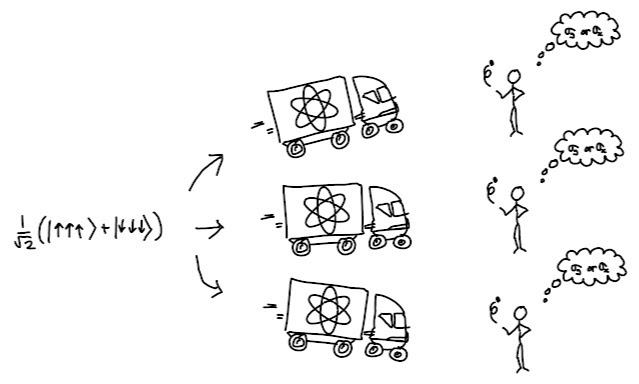Three ways to look at the Bell/GHZ experiment

In 1964 John Stewart Bell proposed an experiment to determine whether the results of quantum measurements were truly random, or governed by hidden variables, i.e. state that exists prior to the measurement, but which we don’t have access to. The experiment involved creating a large number of EPR pairs, and firing them at two observers, Alice and Bob, who measure their photon’s polarisation, choosing the $\updownarrow$ direction or the $\nearrow\llap\swarrow$ direction at random. Determining the result of the experiment involves doing a complex statistical calculation to see if something called Bell’s inequality is satisfied or violated. The Bell experiment was first performed by in 1982 by Alain Aspect, and the result, as most commonly interpreted, is that hidden variables can only exist if Quantum Mechanics is non-local, i.e. if it supports faster-than-light causality! Some time after Bell proposed his experiment, Greenberger, Horne, and Zeilinger suggested an alternativ...